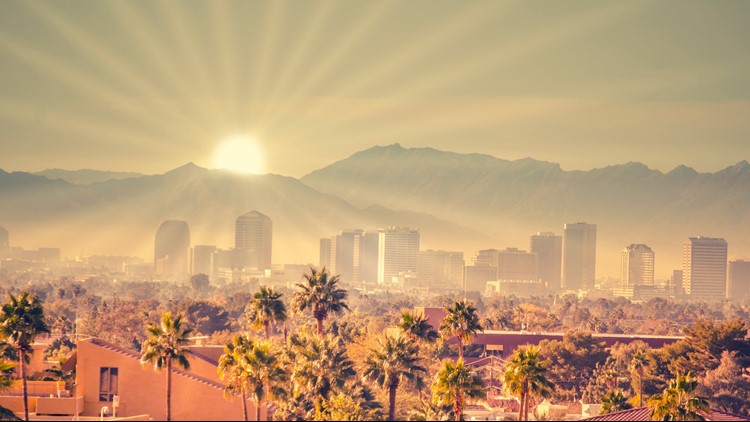Globally, people are increasingly concerned about the connection between climate change and health outcomes. As my colleague Mindy Klowden articulated in a blog, certain individuals with heightened distress about climate change have even developed eco-anxiety. Researchers have conducted extensive studies and published research material that have unveiled that the adverse effects of climate change disproportionately impact traditionally marginalized or high-needs groups. Adopting a health equity lens, one can immediately tell that the same factors that predispose communities to health inequities influence climate vulnerability.
In the last quarter of 2021, The National Oceanic Atmospheric Administration announced that July 2021 had been the hottest month recorded till date. This extreme climate event coincided with one of the worst global pandemics recorded in the history of humanity, which highlighted disparities in both access to health care and social determinants of health. People in socio-economically disadvantaged communities are also more likely to bear the brunt of extreme heat with less tree cover, and fewer air conditioning or other cooling systems in their neighborhoods.
Emerging research findings suggest that individuals of low socioeconomic status are more likely to live in fragile housing susceptible to environmental hazards, with limited ability to prepare for or recover from extreme climate events. This situation is further exacerbated by historical policies and structural inequities that influence the overall quality of life of these same groups of individuals. For example, redlining and similar historical policies have led to the residential segregation of Hispanic and Black people, causing them to predominantly reside in neighborhoods with the highest projected increases in temperature and exposure to extreme climate events. Immigrants are also more likely to take up environmentally hazardous jobs compared to their U.S. borne counterparts.
These situations on their own are appalling. However, what is even more concerning is how they increase traditionally marginalized groups’ climate vulnerability and impact their health outcomes. Data suggests that Black people are 40 percent more like to live in areas with the greatest projected increases in “extreme temperature-related deaths,” and between 41 percent to 60 percent are more likely to live in areas with the greatest projected increases in “premature deaths” due to exposure to harmful particulate matter. Similarly, Hispanic people are more than three times as likely to die from heat-related illnesses compared to white counterparts.
Want more daily health intelligence from Third Horizon Strategies? Sign up for Tea Leaves – a free daily newsletter capturing a rundown of the most important health industry activity!
In response to the current situation, the federal government has introduced interventions aimed at addressing the ensuing climate crisis, ameliorating its effects on traditionally marginalized groups, and elevating its prominence amongst emerging policy priorities. These interventions include an executive order on Tackling the Climate Crisis at Home and Abroad, the U.S. Department of Health and Human Services (HHS) enacting the Climate Action Plan and the establishing the Office of Climate Change and Health Equity (OCCHE), and the Occupational Safety and Health Administration launching the NEP for Outdoor and Indoor Heat-Related Hazards. Additionally, the federal government via its agencies has revoked the use of toxic chemicals such as chlorpyrifos; a pesticide that negatively affects the health of farmworkers and their children. Finally, it has made grant funding available for initiatives aimed at advancing climate change adaptation, promoting risk reduction, and improving community resilience across the United States.
Third Horizon Strategies is committed to improving the health outcomes and overall well-being of traditionally marginalized groups. Through our partnerships with community-based organizations, we support the design of solutions that incorporate SDOH while actively promoting health equity. We are currently working with key stakeholders to develop innovative solutions that cater to both the health and socioeconomic needs of residents of the South Side of Chicago.
Chicago is often regarded as one of the most segregated cities in the U.S. This segregation stems from several factors including structural inequities and historic policies such as redlining. The persistence of these factors created very distinct neighborhoods segregated according to socioeconomic characteristics such as income, race, and ethnicity. The South Side of Chicago is very diverse and is also home to traditionally marginalized groups. This means that the realities discussed above that ‘heighten’ climate vulnerability for traditionally marginalized groups and their associated effects on health outcomes hold true on the South Side of Chicago. It is therefore no surprise that the South Side has some of the poorest health indices in all of Chicago.
We strongly believe that via our work, we can turn the tide and drive change on the South Side of Chicago. Therefore, we urge you to join in advocacy efforts aimed at driving policy action within climate change, while also taking steps to reduce your carbon footprint. In doing so, we will not only decrease climate vulnerability, but we will also improve health outcomes within our communities.
To learn more about our work on the South Side of Chicago, please contact me. I look forward to hearing from you!

